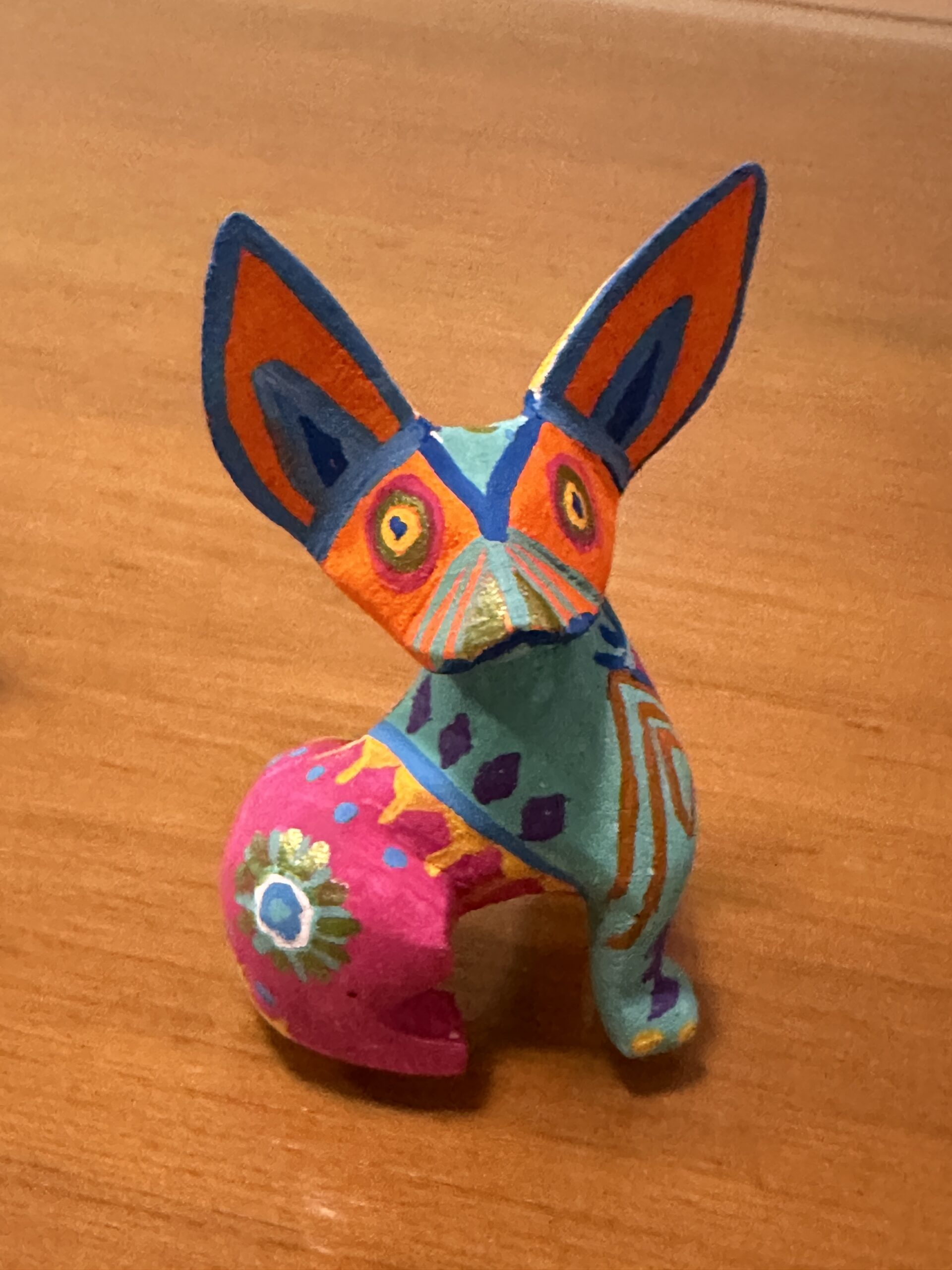Making Alebrijes

After our mostly successful foray into making woodcuts, we thought we’d try our hand at making another of the classic Oaxacan arts, alebrijes. We chose a class at Tlayudona, a local business that specializes in introducing visitors to Oaxaca’s arts and culture.
Alebrijes are dream creatures that originated with famed Mexican cartonero (papier-mâché artist) and legend, Pedro Linares. Linares already had an established career as a master cartonero, specializing in large public installations, when he fell ill and hallucinated wild hybrid animals shouting “Alebrijes!” When his fever broke, he set to work. Because when I have a dream, the first thing I do on waking up is try to make it real. So other people can see it, too.
Later, a Oaxacan wood carver named Manuel Jimenez picked up on the idea, and thus was born the Oaxacan tradition of fantastical carved wooden creatures, still known as alebrijes. For some obscure (to us, at least) reason, the village of San Martin Tilcajete, about an hour south of Oaxaca de Juarez, has become the center of Oaxacan alebrije production.
Before we got around to making our alebrijes, all of this background, and even more cultural context, was shared by our teacher. As it happens, none of it was necessary. We own two Pedro Linares pieces, a fact that surprised the staff at Tlayudona. Our very first folk art purchase was years ago at a shop in Manhattan, the day after a pretty serious bender. We saw this crazy imaginary creature, looked at each other and said, “Do you see that, too? I guess we’d better take it home.”

We named him Santa Tequila, the Patron Saint of Roaring Hangovers, and he has been with us ever since. More importantly, he set us on a lifelong journey of exploring art from all over the world. In some way, I suppose, he planted the seed for our current adventure.
He is, obviously, socked away in storage, and this blown up, blown out picture is the only one I could find of him.
These last two are also from our 2019 trip. They represent the work of Jorge Mendez, scion of a well established family of alebrije makers, whose commitment to adding a modern gloss to the traditional art form caught our eye. We came within a whisker of purchasing the deer, but couldn’t quite believe that it would arrive unbroken, despite assurances. Plus, it was hella expensive. That’s how we wound up with the porcupine, which was from a different workshop.
The class itself was most entertaining. It had a low-key, let’s-just-have-fun vibe that mostly got me over the tension I feel whenever I have to do something even vaguely artistic. Dorothy can imagine an outcome or effect and her hands will make it happen. I have trouble with the imagining part from get go, and I have the eye/hand coordination of a man twice my age. I tend to avoid activities like this, to keep my fragile self esteem intact, but on this adventure I’m trying to embrace the moment. Even if that moment involves making something so primitive, well, it just had to be intentional, right?
They had little pre-carved animals to choose from. Dorothy chose a fox and I chose a rooster. I chose the rooster because it was the largest option. On the one hand, more to paint. On the other, no tight little spaces that required fine detail. My style of ham-fisted sloppy needs room to breathe.
The teacher and staff were delightful, and I’m sure that wasn’t enhanced in any way by the mezcal they kept pouring. I’ll go on record here that the marijuana-infused mezcal had nothing to do with the warm feelings that suffused me, almost as if I was lit from inside.
Fox and Rooster (curiously, best of friends) in hand, we bade our teachers goodbye. But on returning home with our new companions, Dorothy decided that she wanted another go at it. She’d felt constrained by the time limitations (whereas I was just grateful it had ended), and wanted to repaint her fox with more time for both thinking and doing. I went along, not because I believed that what I needed was more time to nail my vision, but because I didn’t think I could make it any worse by starting over.
Et voilà! Dorothy has, as usual, rescued me.




















